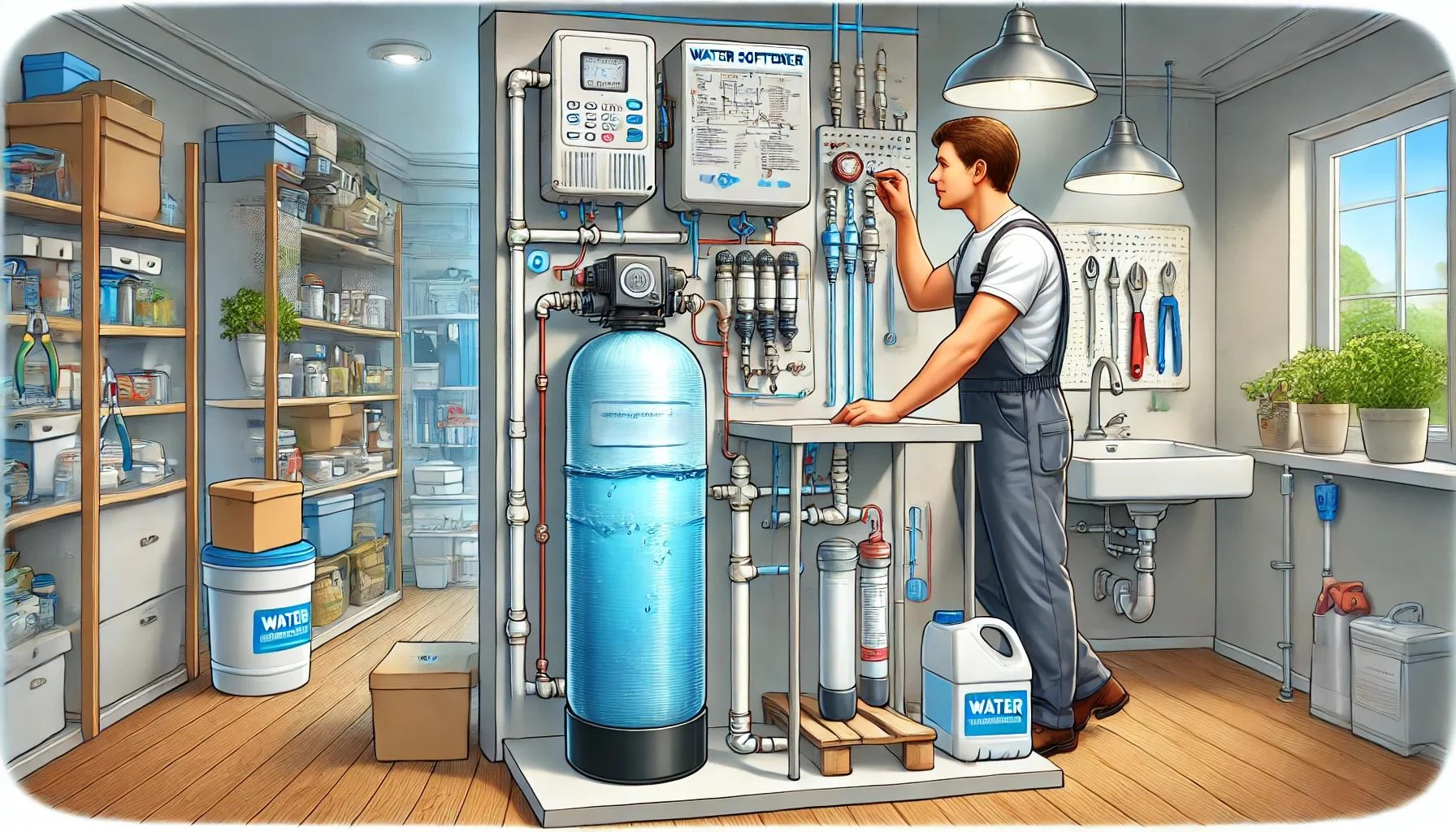Water softeners play a crucial role in maintaining the quality of water in your home, particularly if you live in an area with hard water. Hard water contains high levels of minerals such as calcium and magnesium, which can cause scale buildup in pipes and appliances, reduce the effectiveness of soap, and leave spots on dishes and clothes. This article will explore the importance of water softeners, detail the repair and installation processes, and provide guidance on purchasing the right water softener for your needs.
Understanding Water Softeners
Water softeners work by removing minerals from hard water through a process called ion exchange. This process replaces calcium and magnesium ions with sodium or potassium ions, effectively “softening” the water. The result is water that is easier on your plumbing, appliances, and skin.
Water Softener Repair
Like any household appliance, water softeners can experience issues over time. Common problems include salt bridging, resin bed contamination, and motor or valve failures. Regular maintenance can help prevent these issues, but when they do occur, timely repair is essential to keep your system functioning correctly.
Experts from Superior HVAC Service https://superiorhvacservice.ca/ emphasize the importance of regular maintenance and prompt repair of water softeners. “A well-maintained water softener can last up to 15 years, but neglecting minor issues can lead to more significant problems and costly repairs,” says one of their senior technicians. They recommend routine inspections and cleaning to ensure the system operates efficiently and to extend its lifespan.
Common Water Softener Issues and Solutions
- Salt Bridging: This occurs when a hard crust forms in the brine tank, preventing the system from regenerating properly. Breaking up the bridge manually and ensuring proper salt usage can resolve this issue.
- Resin Bed Contamination: Over time, the resin beads can become fouled with iron, chlorine, or sediment. Regular cleaning with a resin cleaner can help maintain the efficiency of the resin bed.
- Motor or Valve Failures: Mechanical parts can wear out or malfunction. Replacing faulty components with the help of a professional can restore the system’s functionality.
Water Softener Installation
Installing a water softener is a complex task that involves connecting the unit to your home’s plumbing system. Proper installation is crucial to ensure the system works effectively and efficiently. Here are the key steps involved in the installation process:
- Choosing the Right Location: The water softener should be installed close to the main water line, preferably near a drain for the discharge of wastewater during regeneration.
- Connecting the Plumbing: This involves cutting into the main water line and installing bypass valves to allow for maintenance without disrupting the water supply. The system is then connected to the inlet and outlet pipes, ensuring there are no leaks.
- Setting Up the Brine Tank: The brine tank needs to be filled with the appropriate type and amount of salt. The tank is connected to the main unit and set up to manage the regeneration process.
- Programming the System: Modern water softeners often come with digital controls that need to be programmed according to your household’s water usage and hardness levels.
Professional installation is recommended to ensure the system is set up correctly and to avoid potential issues with improper installation.
Buying a Water Softener
When buying a water softener, several factors should be considered to ensure you choose the right unit for your needs. Here’s what to keep in mind:
- Water Hardness Level: Determine the hardness of your water through a water test. This information will help you select a water softener with the appropriate capacity.
- Capacity: The capacity of a water softener is measured in grains per gallon (GPG). Choose a unit that can handle the daily water usage of your household while effectively removing the hardness minerals.
- Type of Water Softener: There are different types of water softeners, including salt-based, salt-free, dual-tank, and magnetic systems. Each type has its advantages and disadvantages. Salt-based systems are the most common and effective, while salt-free systems are more environmentally friendly and require less maintenance.
- Regeneration Method: Water softeners can regenerate on a timer, meter, or manually. Metered systems regenerate based on water usage, which can be more efficient than time-based systems that regenerate at set intervals regardless of usage.
- Cost and Warranty: Consider both the upfront cost and long-term operational costs, including salt and maintenance. A good warranty can provide peace of mind and protect your investment.
- Brand and Reviews: Research different brands and read customer reviews to ensure you’re purchasing a reliable and efficient system.
Water softeners are essential for households dealing with hard water. They help protect plumbing and appliances, improve soap efficiency, and provide softer skin and hair. Regular maintenance and prompt repairs are crucial to keeping your water softener functioning efficiently. Proper installation by professionals ensures the system is set up correctly and operates effectively. When purchasing a water softener, consider factors such as water hardness, capacity, type of system, regeneration method, cost, and brand reputation.
By staying informed and proactive, you can enjoy the benefits of softened water and protect your home from the negative effects of hard water. Consulting experts, like those at Superior HVAC Service, can provide valuable insights and ensure your water softener serves your household reliably for many years.









